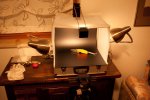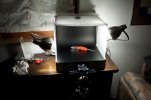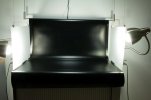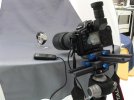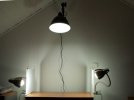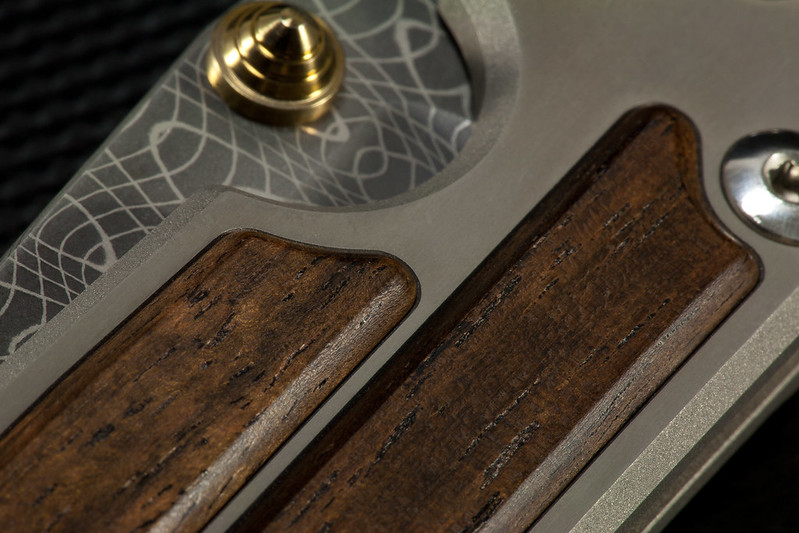- Joined
- May 1, 2014
- Messages
- 890
Quite frequently while posting pictures of CR knives here, people ask about my setup and about how I am doing my pictures. So I thought that this topic is maybe worth a separate thread so people can look at this whenever needed and even ask questions and share experience. Maybe we can make it a sticky.
Hope my English is good enough for this, as I am not a native speaker.
First. Lets talk about a few lets say headlines. Things people are always coming up with right away, when talking about good pictures. Let me try to evaluate them and to put them in the right order for you.
You must have an expensive camera
Looking at your pictures it becomes obvious that I need to buy a new camera
Yes. My camera and my equipment have been growing over the years and yes, it is quite expensive (not as expensive as some peoples CR collection ). But this alone doesnt guarantee any good pictures. Period!
It seems to be necessary to invest a lot of money into good equipment, before being able to take good pictures.
Rule no. 1: First of all it is about having a good idea on how you want to take a picture of your knife. It is about the capability to imagine which picture composition, which view angle or which detail of the knife could make an interesting picture. No technique involved up to here. But people tend to forget about this simple first rule. No interesting picture composition = no good picture. Nevertheless how technically perfect it is. Nevertheless how expansive the equipment is.
Rule no. 2: Hope this German saying works in English: a chain is only as strong as its weakest chain link. Means we have a number of components influencing the results of taking pictures and it does not make sense to pay attention only to one component (for instance the camera). It doesnt make much sense to buy an expensive camera, spending all your funds on it, having nothing left for the rest of the setup. So please make up your mind about your budget you are willing to spend and then take some time to consider how to spread your budget over the complete basic setup. Later on, having gained more experience, you will find out which individual component of your setup should be exchanged/improved in order to reach a higher level of your picture quality.
Now. Lets assume you are going to start your setup from the beginning. Which are those above mentioned components you should consider (also for your budget) and which is the order of their importance for good results.
1. Camera
.. No! Thats what everybody things first. But it is not no. 1.
1. Light conditions!
2. Desktop with photo background
3. Tripod (plus ideally a cable switch for the camera)
4. Camera
Why this order? Because you can invest into no. 4 (camera) whatever money you want. If nos 1 to 3 are not covered, your results will still be insufficient. It is as simple as that.
Hope my English is good enough for this, as I am not a native speaker.
First. Lets talk about a few lets say headlines. Things people are always coming up with right away, when talking about good pictures. Let me try to evaluate them and to put them in the right order for you.
You must have an expensive camera
Looking at your pictures it becomes obvious that I need to buy a new camera
Yes. My camera and my equipment have been growing over the years and yes, it is quite expensive (not as expensive as some peoples CR collection ). But this alone doesnt guarantee any good pictures. Period!
It seems to be necessary to invest a lot of money into good equipment, before being able to take good pictures.
Rule no. 1: First of all it is about having a good idea on how you want to take a picture of your knife. It is about the capability to imagine which picture composition, which view angle or which detail of the knife could make an interesting picture. No technique involved up to here. But people tend to forget about this simple first rule. No interesting picture composition = no good picture. Nevertheless how technically perfect it is. Nevertheless how expansive the equipment is.
Rule no. 2: Hope this German saying works in English: a chain is only as strong as its weakest chain link. Means we have a number of components influencing the results of taking pictures and it does not make sense to pay attention only to one component (for instance the camera). It doesnt make much sense to buy an expensive camera, spending all your funds on it, having nothing left for the rest of the setup. So please make up your mind about your budget you are willing to spend and then take some time to consider how to spread your budget over the complete basic setup. Later on, having gained more experience, you will find out which individual component of your setup should be exchanged/improved in order to reach a higher level of your picture quality.
Now. Lets assume you are going to start your setup from the beginning. Which are those above mentioned components you should consider (also for your budget) and which is the order of their importance for good results.
1. Camera
.. No! Thats what everybody things first. But it is not no. 1.
1. Light conditions!
2. Desktop with photo background
3. Tripod (plus ideally a cable switch for the camera)
4. Camera
Why this order? Because you can invest into no. 4 (camera) whatever money you want. If nos 1 to 3 are not covered, your results will still be insufficient. It is as simple as that.

